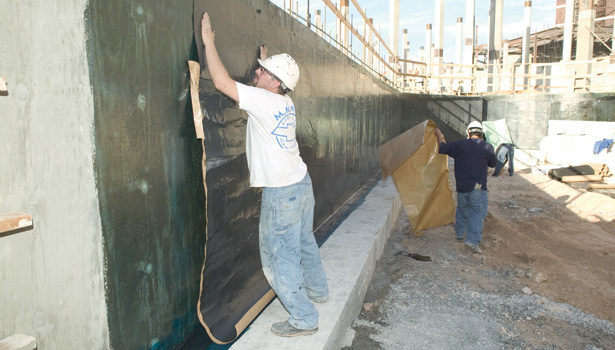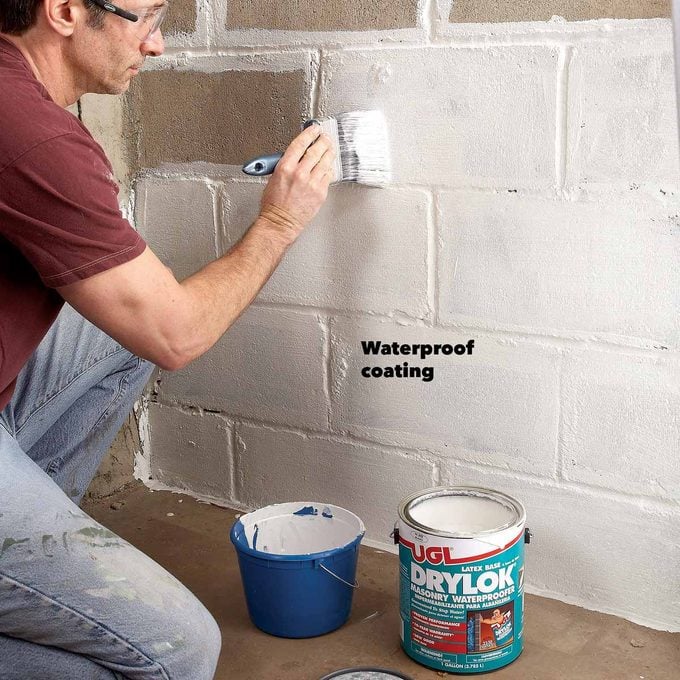Waterproofing Auckland Things To Know Before You Buy
Table of ContentsThe Best Strategy To Use For Waterproofing AucklandWaterproofing Auckland Can Be Fun For EveryoneThe 4-Minute Rule for Waterproofing AucklandWaterproofing Auckland for DummiesMore About Waterproofing AucklandIndicators on Waterproofing Auckland You Need To Know
Waterproofing structures is the approach of forming a barrier over surfaces of foundations, roofings, wall surfaces and other structural members of buildings to avoid water infiltrations with these surface areas. In recap, building surfaces are made water-resistant and water-proof. Research study has actually revealed that waterproofing only accounts for 1% of a structure's building and construction prices however when disregarded, it can be responsible for almost 90% of the damages.
You need to make sure that you obtain the best types of waterproofing products for your distinct needs. To aid you in the choice process, listed below are the 5 types of waterproofing in construction: Cementitious waterproofing items are thought about as the easiest waterproofing products to use. These are conveniently available from suppliers of stonework products like, as well as they're easy to blend and use.
Polyurethane liquid membrane layer method of waterproofing is normally used for the flat roof location and subjected to weathering. This kind of waterproofing material is really conscious dampness content present. As a result, before application, it is essential to be extra cautious in reviewing the moisture material of the concrete piece, otherwise peeling or de-bonding of membranes might take place after some time.
It offers much more versatility than the cementitious types of waterproofing. At the end of the day, there are lots of one-of-a-kind kinds of waterproofing products in the market.
Getting The Waterproofing Auckland To Work
So, exactly how does basement waterproofing job? Inside cellar waterproofing works by dealing with water seepage where it manifests itself inside. After extensively examining any leak-prone inner areas, employees produce a trench in the basement flooring that runs parallel to the damaged area. They position a drain system in this trench, directing water far from the cellar interior, and also seal the trench with concrete to recover the look of the initial structure flooring.

Exterior basement waterproofing strategies alleviate this stress by rerouting water into a gravel-covered ground drainpipe, which carries it away from the residence. While both techniques of basement waterproofing job well, they deal with the issue in different ways. Inside basement waterproofing remains a preferred alternative because of its relatively low cost point, while exterior basement waterproofing helps homeowners that choose to avoid interior building and construction work.
Get in touch with us today to find out more regarding the cellar waterproofing work we perform for Georgia house owners.
Excitement About Waterproofing Auckland
It is important to water-proof your house. Interior locations of our residence should be maintained dry from roofing to cellar. Waterproofing your home before building and construction will prevent these issues. If you water-proof your home, it will stop damages later on. gale seepage. Such problems will need a professional and also some basic understanding regarding the trouble and options to it.
It is likewise essential for the accuracy of the building. Depending on the level of water damages or proprietor choice, waterproofing systems can be mounted inside or outdoors.
The poly acrylic chemical service site here is prepared which is used to seal the breakage or leak on the wall surface as well as terrace which will be a solid water resistant base as well as safeguard and preserve the toughness of any kind of framework. This is done by a very educated specialist group. You require to see to it that premium products are utilized for the procedure.
The last step is to place two layers of poly acrylic chemical with white cement on the surface area. is optimal for structures as well as frameworks that are already having leak or damage along with for new frameworks to avoid leak in future. This process assists in maintaining the life as well as quality of the building as well read what he said as guarantees that there is no damages to the building since of the rainfalls.
The Best Guide To Waterproofing Auckland

Apply a thick concrete slurry over the surface area of the slab. Apply 1:1 -:3 steel screen layer. Treat this layer for at the very least 7 days, by putting damp gunny bags on it. Over this coat, use a finishing coat with concrete sand mortar 1:4 and water-proofing substance as per the layout.
Add color pigments such as red, green, and so on as per the demand for an attractive surface. Make a side between the parapet as well as the sloping piece on the 2nd day. Heal this waterproofing for fifteen days, with wet gunny bags spread out over it. Constant watering is needed on a sloping piece.
Some Ideas on Waterproofing Auckland You Need To Know
Examine the density of the Shahbad floor tiles. It should be between 32mm to 40mm (1 1/4 to 1 1/2). Preserve the break joint pattern while dealing with the Shahabad floor tiles for the base. After dealing with the Shahabad floor tiles, grout the joints with cement slurry entirely. Seal the joints in between the Shahabad ceramic tiles with the assistance of see here C.M.
For the basement, the stipulation of seamless gutter and also sump is made in P.C.C. itself and also Shahabad base is additionally prepared in the very same style. The gutter is given a proper slope in the direction of the sump. This stipulation is a safety net against the occasional entry of rain in the cellar. Over the plastered Shahabad base, boating slab is cast and the R.C.C.
Rough Shahbad tiles are after that taken care of to the vertical pardi from the outside. Apply cool concrete paste on the four edges as well as in the center of the 25mm (1) Shahabad tile, Press this tile securely over the R.C.C. pardi in line and level. At one time, fix just an elevation of 1.
What Does Waterproofing Auckland Mean?
After curing, offer the last jointless waterproof plaster coat in C.M. 1:4 over the rough Shahabad. The whole process pointed out over forms a box around the structure as well as does not permit any water to leak via or leakage from the cellar.